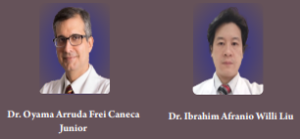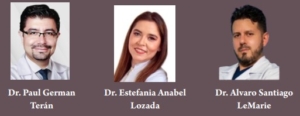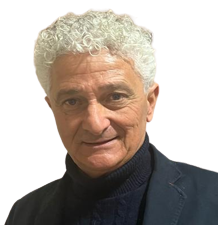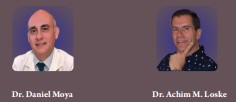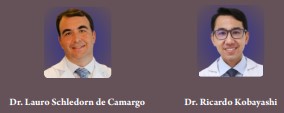Literature Review | Volume 2 | Issue 2 | JRS Jul – Dec 2022 | Page 17-20 | Constanza P. Pantoja González, Daniel Moya, Leonardo Guiloff, Guillermo Rodríguez, Camila Leiton Lobos, Gilberto Salazar Chamorro
DOI: 10.13107/jrs.2022.v02.i02.57
Author: Constanza P. Pantoja González [1], Daniel Moya [2], Leonardo Guiloff [3], Guillermo Rodríguez [4], Camila Leiton Lobos [5], Gilberto Salazar Chamorro [6]
[1] Dental Surgeon, Diego Portales University, Chile.
[2] Department of Orthopaedics, Hospital Británico de Buenos Aires, Argentina,
[3] Surgeon, Specialist in Traumatology and Orthopedics, University of Chile, Founding Partner and Past President of ACHITOC and ONLAT, Chile,
[4] Dental Surgeon, University of Buenos Aires; Endodontics Specialist, Maimonides University, Bs As; , Specialist in Oral Implantology, Catholic University of Argentina, Buenos Aires.
[5] Dental Surgeon, Diego Portales University, Specialist in Oral Maxillofacial Implantology Andrés Bello University, Chile,
[6] Dental Surgeon, Pontifical Javierana University, Colombia. Specialist in Oral Maxillofacial Implantology, Professor at San Sebastián University, Chile.
Address of Correspondence
Dr. Constanza P. Pantoja Gonzalez, DDS,
Dental Surgeon, Diego Portales University, Chile.
E-mail: coni.panto@gmail.com
References:
1. Moya D, Ramón S, Schaden W, Wang CJ, Guiloff L, Cheng JH. The Role of Extracorporeal Shockwave Treatment in Musculoskeletal Disorders. J Bone Joint Surg Am. 2018 Feb 7;100(3):251-263. doi: 10.2106/JBJS.17.00661. PMID: 29406349.
2. Olivares A, Schuh CMAP, Aguayo S. Extracorporeal Shockwave Treatment for Managing Biofilm-mediated Infections in Dentistry: The Current Knowledge and Future Perspectives. Journal of Regenerative Science. Jan – Jun 2022; 2(1): 22-26.
3. Alshihri A. Translational Applications of Extracorporeal Shock Waves in Dental Medicine: A Literature Review. Biomedicines. 2022;10(4):902. https://doi.org/10.3390/biomedicines10040902
4. Amengual-Penafiel L, Jara-Sepúlveda MC, Parada-Pozas L, Marchesani-Carrasco F, Cartes-Velásquez R, Galdames-Gutiérrez B. Immunomodulation of Osseointegration Through Extracorporeal Shock Wave Therapy. Dent Hypotheses 2018;9:45-50.
5. Goyal, Eva, et al. “Extra Corporeal Shock Wave – A New Wave of Therapy.” Dental Journal of Advance Studies. 2015; 3 (3): 129–34, https://doi.org/10.1055/s-0038-1672027.
6. Li X, Chen M, Li L, Qing H, Zhu Z. Extracorporeal shock wave therapy: a potential adjuvant treatment for peri-implantitis. Med Hypotheses. 2010 Jan;74(1):120-2. doi: 10.1016/j.mehy.2009.07.025. Epub 2009 Aug 8. PMID: 19666209.
7. Morandi P, Corbella S, Cavalli N, Francetti L. Applicazioni delle onde d’urto in odontoiatria: revisione narrativa. Dental Cadmos. Oct 2019; 87(8). doi: 10.19256/d.cadmos.08.2019.04
8. Show S, Kumar Giri P, Debnath T, Ashit Kumar Pal A. Extracorporeal shockwave therapy… “unveiling new horizons in periodontology”- an overview. J Indian Dental Assoc. 2020; 36 (1): 44-47.
9. Song WP, Ma XH, Sun YX, Zhang L, Yao Y, Hao XY, Zeng YJ. Extracorporeal shock wave therapy (ESWT) may be helpful in the osseointegration of dental implants: A hypothesis. Medical Hypotheses. 2020; 145. https://doi.org/10.1016/j.mehy.2020.110294
10. Venkatesh Prabhuji ML, Khaleelahmed S, Vasudevalu S, Vinodhini K. Extracorporeal shock wave therapy in periodontics: Anew paradigm. J Indian Soc Periodontol. 2014 May;18(3):412-5. doi: 10.4103/0972-124X.134597. PMID: 25024562; PMCID: PMC4095641.
11. Goker F, Sansone V, Applefield RC, Taschieri S, Del Fabbro M. Clinical applications of shock waves in dentistry. J Biol Regul Homeost Agents. 2019 September-October;33(5):1591-1595. doi: 10.23812/19-15L. PMID: 31565915.
12. Özkan E, Özkan TH. Effects of Extracorporeal Shock Wave Therapy in The Maxillofacial Surgery Practice – A Systematic Review. International Journal of Human and Health Sciences. 2019; 3 (4): 186-195.
13. Elisetti N. Extracorporeal shock wave therapy (ESWT): An emerging treatment for peri-implantitis. Med Hypotheses. 2021 May;150:110565. doi: 10.1016/j.mehy.2021.110565. Epub 2021 Mar 23. PMID: 33799162.
14. Cai Z, Falkensammer F, Andrukhov O, Chen J, Mittermayr R, Rausch-Fan X. Effects of Shock Waves on Expression of IL-6, IL-8, MCP-1, and TNF-α Expression by Human Periodontal Ligament Fibroblasts: An In Vitro Study. Med Sci Monit. 2016 Mar 20;22:914-21. doi: 10.12659/msm.897507. PMID: 26994898; PMCID: PMC4805137.
15. Novak KF, Govindaswami M, Ebersole JL, Schaden W, House N, Novak MJ. Effects of low-energy shock waves on oral bacteria. J Dent Res. 2008 Oct;87(10):928-31. doi: 10.1177/154405910808701009. PMID: 18809745.
16. Olivares A, Schuh CMAP, Aguayo S. Inhibitory effect of FhESWT on Streptococcus Mutans biofilm formation in-vitro. 2022 IADR/APR General sesión. Final Presentation ID: 0942. https://iadr.abstractarchives.com/abstract/22iags-3722065/inhibitory-effect-of-fheswt-on-streptococcus-mutans-biofilm-formation-in-vitro Last accessed August 2022.
17. Altuntaş EE, Oztemur Z, Ozer H, Müderris S. Effect of extracorporeal shock waves on subcondylar mandibular fractures. J Craniofac Surg. 2012 Nov;23(6):1645-8.doi: 10.1097/SCS.0b013e31825e38a2. PMID: 23147295.
18. Atsawasuwan P, Chen Y, Ganjawalla K, Kelling AL, Evans CA. Extracorporeal shockwave treatment impedes tooth movement in rats. Head Face Med. 2018 Nov 12;14(1):24. doi: 10.1186/s13005-018-0181-5. PMID: 30419912; PMCID: PMC6233511.
19. Chen Y, Ganjawalla K, Oubaidin M, Kelling A, Evans C, Atsawasuwan P. Effect of Shockwave Therapy on Orthodontic Tooth Movement. 2015 IADR/AADR/CADR General Session (Boston, Massachusetts). Final Presentation ID: 3987https://iadr.abstractarchi ves.com/abstract/15iags-2104243/effect-of-shockwave-therapy-on-orthodontic-tooth-movement Last accessed August,2022.
20. Datey A, Thaha CSA, Patil SR, Gopalan J, Chakravortty D. Shockwave Therapy Efficiently Cures Multispecies Chronic Periodontitis in a Humanized Rat Model. Front Bioeng Biotechnol. 2019 Dec 13;7:382. doi: 10.3389/fbioe.2019.00382. PMID: 31911896; PMCID: PMC6923175.
21. Ginini JG, Maor G, Emodi O, Shilo D, Gabet Y, Aizenbud D, Rachmiel A. Effects of Extracorporeal Shock Wave Therapy on Distraction Osteogenesis in Rat Mandible. Plast Reconstr Surg. 2018 Dec;142(6):1501-1509. doi: 10.1097/PRS.0000000000004980. Erratum in: Plast Reconstr Surg. 2019 Feb;143(2):654. PMID: 30188470.
22. Göl EB, Özkan N, Bereket C, Önger ME. Extracorporeal Shock-Wave Therapy or Low-Level Laser Therapy: Which is More Effective in Bone Healing in Bisphosphonate Treatment? J Craniofac Surg. 2020 Oct;31(7):2043-2048. doi: 10.1097/SCS.0000000000006506. PMID:32371691.
23. Hazan-Molina H, Kaufman H, Reznick ZA, Aizenbud D. [Orthodontic tooth movement under extracorporeal shock wave therapy: the characteristics of the inflammatory reaction–a preliminary study]. Refuat Hapeh Vehashinayim (1993). 2011 Jul;28(3):55-60, 71. Hebrew. PMID: 21939106.
24. Hazan-Molina H, Kaufman H, Reznick ZA, Aizenbud D. Cytokine Concentration During Orthodontic Tooth Movement Under Shock Wave Therapy. 2012 Pan European Region Meeting (Helsinki, Finland). Poster session. https://iadr.abstractarchives.com/abstract/per12-167553/cytokine-concentration-during-orthodontic-tooth-movement-under-shock-wave-therapy Last accessed August 20,2022.
25. Hazan-Molina H, Reznick ZA, Kaufman H, Aizenbud D. Assessment of IL-1β and VEGF concentration in a rat model during orthodontic tooth movement and extracorporeal shock wave therapy. Archives of Oral Biology. 2013; 58 (2): 142-150.
26. Hazan-Molina H, Reznick AZ, Kaufman H, Aizenbud D. Periodontal cytokines profile under orthodontic force and extracorporeal shock wave stimuli in a rat model. J Periodontal Res. 2015 Jun;50(3):389-96. doi: 10.1111/jre.12218. Epub 2014 Jul 29. PMID: 25073624.
27. Hazan-Molina H, Aizenbud I, Kaufman H, Teich S, Aizenbud D. The Influence of Shockwave Therapy on Orthodontic Tooth Movement Induced in the Rat. Adv Exp Med Biol. 2016;878:57-65. doi: 10.1007/5584_2015_179. PMID: 26542601.
28. Hazan-Molina H, Gabet Y, Aizenbud D. Accelerated Orthodontic Tooth Movement – Fiction or Reality. 2016 IADR/PER Congress (Jerusalem, Israel) Final Presentation ID: 0070https://iadr.abstractarchives.com/abstract/per16-2530206/accelerated-orthodontic-tooth-movement–fiction-or-reality Last accessed August 2022.
29. Hazan-Molina H, Gabet Y, Aizenbud I, Aizenbud N, Aizenbud D. Orthodontic force and extracorporeal shock wave therapy: Assessment of orthodontic tooth movement and bone morphometry in a rat model. Arch Oral Biol. 2022 Feb;134:105327. doi: 10.1016/j.archoralbio.2021.105327. Epub 2021 Nov 29. PMID: 34891101.
30. Lai JP, Wang FS, Hung CM, Wang CJ, Huang CJ, Kuo YR. Extracorporeal shock wave accelerates consolidation in distraction osteogenesis of the rat mandible. J Trauma. 2010 Nov;69(5):1252-8. doi: 10.1097/TA.0b013e3181cbc7ac. PMID: 20404761.
31. Özkan E, Bereket MC, Önger ME, Polat AV. The Effect of Unfocused Extracorporeal Shock Wave Therapy on Bone Defect Healing in Diabetics. J Craniofac Surg. 2018 Jun;29(4):1081-1086. doi: 10.1097/SCS.0000000000004303. PMID: 29461364.
32. Özkan E, Bereket MC, Şenel E, Önger ME. Effect of Electrohydraulic Extracorporeal Shockwave Therapy on the Repair of Bone Defects Grafted With Particulate Allografts. J Craniofac Surg. 2019 Jun;30(4):1298-1302. doi: 10.1097/SCS.0000000000005213. PMID: 31166268.
33. Sathishkumar S, Meka A, Dawson D, House N, Schaden W, Novak MJ, Ebersole JL, Kesavalu L. Extracorporeal shock wave therapy induces alveolar bone regeneration. J Dent Res. 2008 Jul;87(7):687-91. doi: 10.1177/154405910808700703. PMID: 18573992.
34. Woodmansey K, White R, Rhodes S, Kramer P. Effects of Extracorporeal Shockwave Therapy: A Pilot Study Using a Rat Model. 2015 IADR/AADR/CADR General Session (Boston, Massachusetts). https://iadr.abstractarchives.com/abstract/15iags-2068595/effects-of-extracorporeal-shockwave-therapy-a-pilot-study-using-a-rat-model Last accessed August 2022.
35. Bereket C, Çakir-Özkan N, Önger ME, Arici S. The Effect of Different Doses of Extracorporeal Shock Waves on Experimental Model Mandibular Distraction. J Craniofac Surg. 2018 Sep;29(6):1666-1670. doi: 10.1097/SCS.0000000000004571. PMID: 29742568.
36. Demir O, Arici N. Dose-related effects of extracorporeal shock waves on orthodontic tooth movement in rabbits. Sci Rep. 2021 Feb 9;11(1):3405. doi: 10.1038/s41598-021-82997-5. PMID: 33564049; PMCID: PMC7873214.
37. Onger ME, Bereket C, Sener I, Ozkan N, Senel E, Polat AV. Is it possible to change of the duration of consolidation period in the distraction osteogenesis with the repetition of extracorporeal shock waves? Med Oral Patol Oral Cir Bucal. 2017 Mar 1;22(2):e251-e257. doi: 10.4317/medoral.21556. PMID: 28160590; PMCID: PMC5359710.
38. Senel E, Ozkan E, Bereket MC, Onger ME. The assessment of new bone formation induced by unfocused extracorporeal shock wave therapy applied on pre-surgical phase of distraction osteogenesis. Eur Oral Res. 2019 Sep;53(3):125-131. doi: 10.26650/eor.20190041. Epub 2019 Sep 1. PMID: 31579893; PMCID: PMC6761485.
39. Vares YE, Shtybel NV, Dudash AP. Does extracorporeal shock wave therapy leads to restitution of postoperative bone defects on mandible? an experimental study in rabbit model. Romanian Journal of Oral Rehabilitation. 2019; 11 (4): 234-241.
40. Ahmed EAE, Eldibany M M, Melek LF; Abdelnaby HM. Comparative study between the effect of shockwave therapy and low-intensity pulsed ultrasound (lipus) on bone healing of mandibular fractures (clinical & radiographic study). Alexandria Dental J. 2022;5,47,(1):Page 29-35.
41. Falkensammer F, Rausch-Fan X, Arnhart C, Krall C, Schaden W, Freudenthaler J Impact of extracorporeal shock-wave therapy on the stability of temporary anchorage devices in adults: A single-center, randomized, placebo-controlled clinical trial. American Journal of Orthodontics and Dentofacial Orthopedics. 2014; 146 (4):413- 422.https://doi.org/10.1016/j.ajodo.2014.06.008
42. Falkensammer F, Arnhart C, Krall C, Schaden W, Freudenthaler J, Bantleon HP. Impact of extracorporeal shock wave therapy (ESWT) on orthodontic tooth movement-a randomized clinical trial. Clin Oral Investig. 2014 Dec;18(9):2187-92. doi: 10.1007/s00784-014-1199-0. Epub 2014 Feb 19. PMID: 24549763.
43. Falkensammer F, Schaden W, Krall C, Freudenthaler J, Bantleon HP. Effect of extracorporeal shockwave therapy (ESWT) on pulpal blood flow after orthodontic treatment: a randomized clinical trial. Clin Oral Investig. 2016 Mar;20(2):373-9. doi: 10.1007/s00784-015-1525-1. Epub 2015 Jul 17. PMID: 26179985.
44. Falkensammer F, Rausch-Fan X, Schaden W, Kivaranovic D, Freudenthaler J. Impact of extracorporeal shockwave therapy on tooth mobility in adult orthodontic patients: a randomized single-center-placebo-controlled clinical trial. J Clin Periodontol. 2015 Mar;42(3):294-301. doi: 10.1111/jcpe.12373. Epub 2015 Feb 20. PMID: 25640577.
45. Pfaff JA, Boelck B, Bloch W, Nentwig GH. Growth Factors in Bone Marrow Blood of the Mandible With Application of Extracorporeal
Shock Wave Therapy. Implant Dent. 2016 Oct;25(5):606-12. doi: 10.1097/ID.0000000000000452. PMID: 27504532.
46. What is periodontitis? European Federation of Periodontology. https://www.efp.org/for-patients/what-is-periodontitis/#:~:text=Periodontitis%20is%20a%20gum%20disease, lead%20to%20other%20health%20problems. Last accessed August
2022.
47. Vestby LK, Grønseth T, Simm R, Nesse LL. Bacterial Biofilm and its Role in the Pathogenesis of Disease. Antibiotics (Basel). 2020 Feb
3;9(2):59. doi: 10.3390/antibiotics9020059. PMID: 32028684; PMCID: PMC7167820.
48. Hernández-Jiménez E, Del Campo R, Toledano V, Vallejo-Cremades MT, Muñoz A, Largo C, Arnalich F, García-Rio F, Cubillos-Zapata C, López-Collazo E. Biofilm vs. planktonic bacterial mode of growth: which do human macrophages prefer? Biochem Biophys Res Commun. 2013 Nov 29;441(4):947-52. doi: 0.1016/j.bbrc.2013.11.012. Epub 2013 Nov 14. PMID: 24239884.
49. Sharma D, Misba L, Khan AU. Antibiotics versus biofilm: an emerging battleground in microbial communities. Antimicrob Resist Infect Control. 2019 May 16;8:76. doi: 10.1186/s13756-019-0533-3. PMID: 31131107; PMCID: PMC6524306.
50. Prathapachandran J, Suresh N. Management of peri-implantitis. Dent Res J (Isfahan). 2012 Sep;9(5):516-21. doi: 10.4103/1735- 3327.104867. PMID: 23559913; PMCID: PMC3612185. 51. Astolfi V, Ríos-Carrasco B, Gil-Mur FJ, Ríos-Santos JV, Bullón B, Herrero-Climent M, Bullón P. Incidence of Peri-Implantitis and Relationship with Different Conditions: A Retrospective Study. Int J Environ Res Public Health. 2022 Mar 31;19(7):4147. doi: 10.3390/ijerph19074147. PMID: 35409826; PMCID: PMC8998347.
52. Guglielmotti MB, Olmedo DG, Cabrini RL. Research on implants and osseointegration. Periodontol 2000. 2019 Feb;79(1):178-189. doi: 10.1111/prd.12254. PMID: 30892769.
53. Ghannam MG, Alameddine H, Bordoni B. Anatomy, Head and Neck, Pulp (Tooth) [Updated 2022 Aug 8]. In: StatPearls [Internet]. Treasure Island (FL): StatPearls Publishing; 2022 Jan-. Available from: https://www.ncbi.nlm.nih.gov/books/NBK537112/ [Last accessed on Jul 2022].
54. “Orthodontics”. Britannica, The Editors of Encyclopaedia. 2018; Encyclopedia Britannica, 4 Jan. 2018, https://www.britannica.com/science/orthodontics. Last accessed August 2022].

| How to Cite this article: Pantoja C, Moya D, Guiloff L, Rodríguez G, Leiton Lobos C, Salazar Chamorro G | Use of Shock Waves in Dental Medicine. | Journal of Regenerative Science | Jul – Dec 2022; 2(2): 17-20. |


